We have some interesting ways of being in Ireland. On the one hand we're inordinately proud of our reputation overseas. We know and love how well regarded we are: in literature and the arts, as well as having the nicest soccer fans in the stadium. But on the other, we often do ourselves down at home, and don't always celebrate what's right under our noses – something that Valerie Mulvin's new book aims to rectify in terms of the typical Irish town.
Actually, as Approximate Formality demonstrates, typical doesn’t mean “same old”, and from classic squares to ovals, trians to diamonds, Mulvin takes us through the emergence of the Irish town, from the Celts and Vikings through Medieval times, into the Renaissance period and on to the era of the landlord.
While it’s not the colour coffee-table tome we might associate with some books celebrating architecture, and while the book’s title might have you think that this is a publication for the initiated, for architects, thinkers and planners; it would also reward a wider reading because, through its pages you can discover a wealth of architectural riches that have been hiding in plain sight.
“I hope it will inform people about what we have,” agrees Mulvin who, with Niall McCullough set up the award winning architectural practice, McCullough Mulvin in 1986. “People look at the book’s cover and say: where is that?” The cover shows an aerial shot of the town of Templemore. Uncluttered by vehicles, signage and other street furniture, it looks grand on a scale we tend to associate with the more celebrated spaces of continental Europe.
That, according to Mulvin, is the problem. “We don’t realise what we have,” she says. “If it was in Europe, it would be paved or cobbled, there would be cafés and tables outside. If people realised that the towns we have here are part of that European urban culture, that would be really significant.”
Still, she also acknowledges that, for many, this is a high mountain to climb. The book opens with a quote from Kevin Barry’s short story, Ideal Homes (from There Are Little Kingdoms). “The village was an unimpressive tangle of a dozen streets,” writes Barry, in a depiction that will feel familiar to many. “There was a main street and a square, one as drab as the other, and a woeful few streets subsidiary to these. There was an insignificant river, brown and slow, and granite hills beyond – these, it was said, gave the place a scenic charm but in truth it was forlorn. The people were terraced in neat rows and roofed in with grey slates and were themselves forlorn, but they wouldn’t easily have said why.”
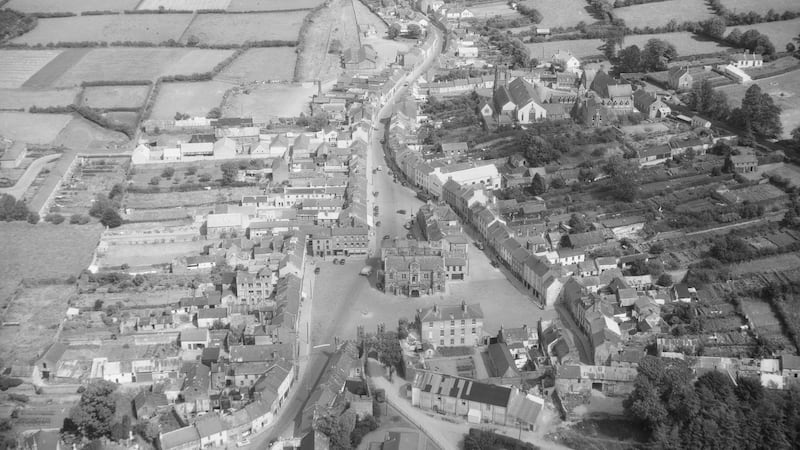
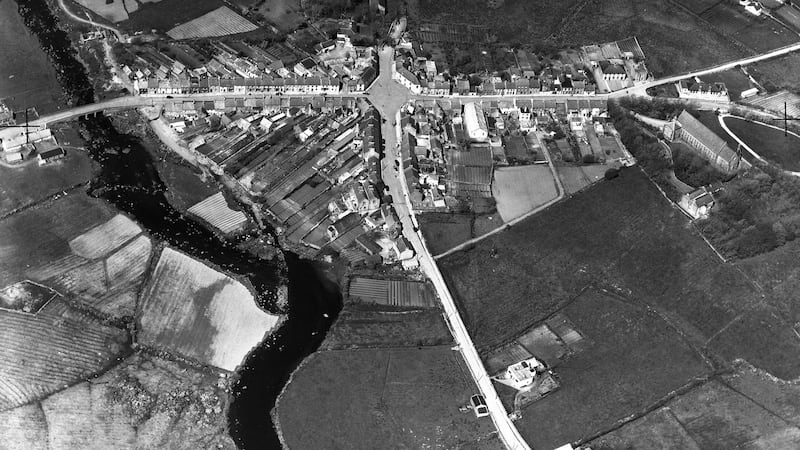
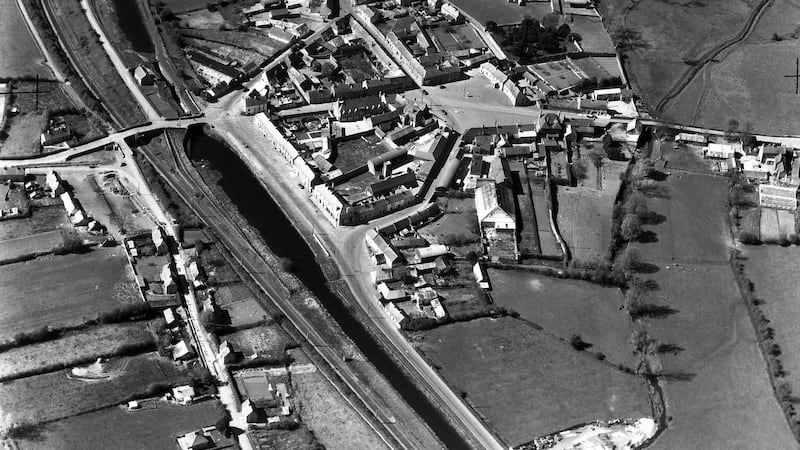
Mulvin believes it doesn't have to be this way. "I grew up in Bray and loved it. Look at Westport, it just blows you away." An intriguing early photograph of Westport in a semi-derelict state shows what the transformation wrought in the 1780s, by John Browne of Westport House, as a place for his workers and tenants to live. "We have a tradition of viewing landlords in a bad light," says Mulvin, "but many realised that there was a symbiosis to be had, building homes, shops and markets. Everybody benefitted, and that has been forgotten." She cites Cahir and Portlaw as further examples.
As Covid has put a pause to our international travels, it has also given us the chance to look more closely at what we have at home – and so Approximate Formality is a timely tome. Not only are people realising that working from home means they don’t have to cram into crowded cities, we are also spending more of our time, energy and expectations on what is in front of us – and that includes Irish rural towns. Meanwhile, a combination of poor government policies, a ridiculous reliance on market forces, and a pause to what we did have in terms of a building programme have all meant that the Irish housing crisis is worse than ever. Mulvin hopes the book might cause a reassessment.
The aerial shots in the book also show a majesty to the shapes of our spaces – Macroom is gorgeous, so too is Lisburn. Four roads meet in a diamond in Louisburgh. Formed by geography, history and commerce, and from the sixth century on, we have been mapping out these spaces to gather, shop, shelter and live – and somewhere along the way, we turned our backs on them and started to pitch our collective tents elsewhere. But, from Cavan to Lismore, spend time in an Irish country town and discover archways that might once have shown the way in for a coach and horses, leading to hidden gardens and mews houses, right off the main street.
“If people could realise that they can live in these amazing environments, that they’re already here, that would be a really big thing,” Mulvin says. So what has stopped us up till now? Mulvin hopes that by giving us a stronger sense of the past, we can return these towns to a 21st century possibility. Sometimes the fault has lain with patterns of ownership. It’s cheaper, and easier for a developer to whack up an edge of town shopping centre than negotiate ownership of a diverse collection of more central properties. Housing estates can be planned and built without worrying about fitting into an existing infrastructure – but that’s just the problem: the existing infrastructure offers blended living in a way a new build estate can’t.
Various iterations of the Living Over the Shop scheme have tried to unlock underused upper floor accommodation in Irish towns, but Mulvin suggests a greater flexibility in planning policy would mean that empty shops could become houses, with the potential to change back again should the need, or desire arise. “I don’t think we’ll find shops coming back in these towns in the way they used to be there. But one or two can create a vibrant climate. A building could be a bakery, or it could be someone’s front room.” So, alongside our own attitudes to where and how we live, we also need policy changes, and a greater openness to new ways of thinking across the board.
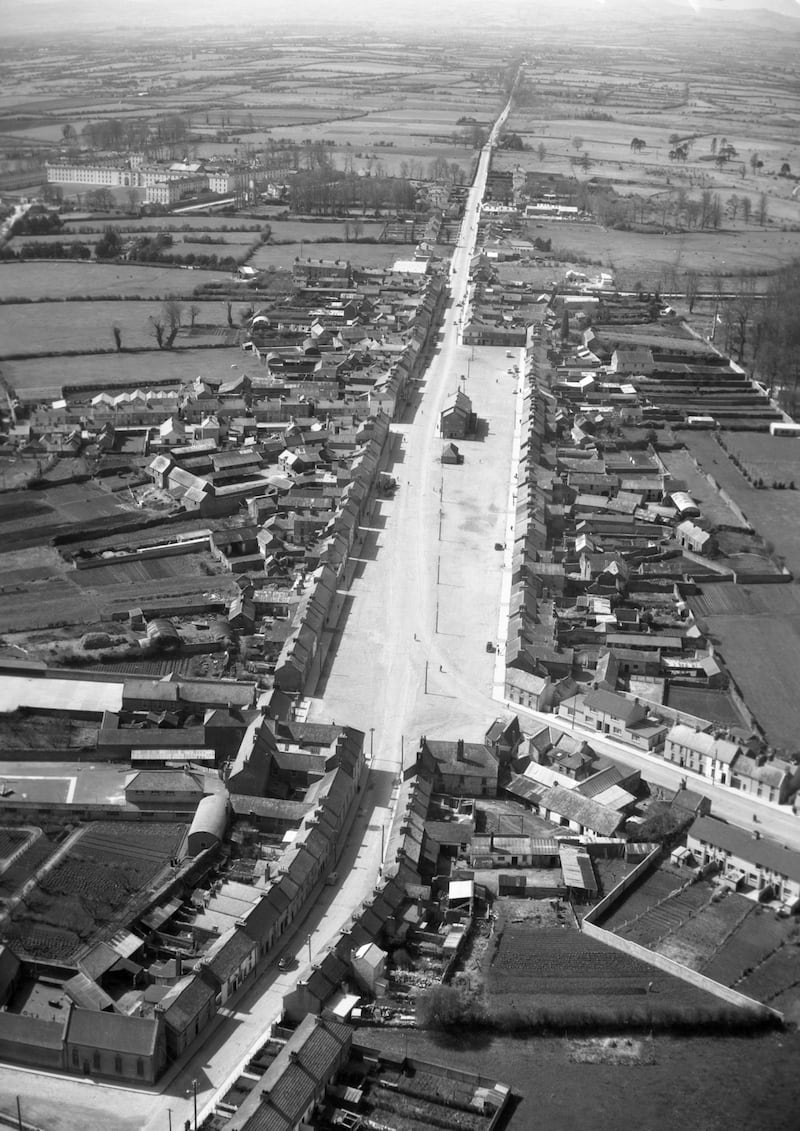
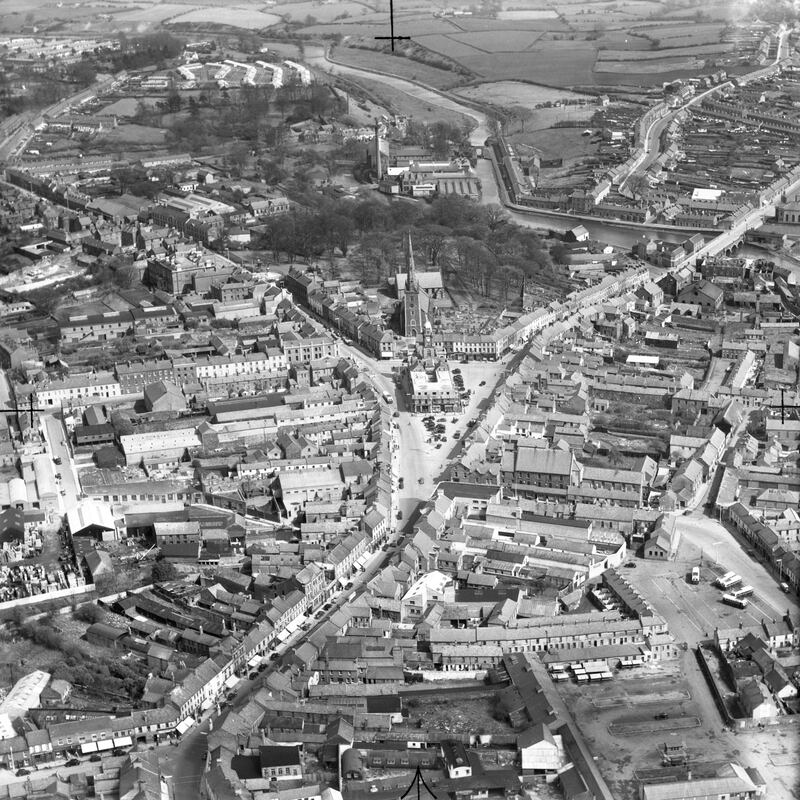
“We need the co-operation of insurers, fire officers and banks as well as the Local Authorities for people to come together and make their lives in these places,” Mulvin says. “They all knit together, and they need to work together.” She points to an image of a building in Lahinch. A quick look misses the subtleties of what she’s showing. “That’s a whole bunch of things in a very simple envelope,” she says, of the three storey façade that manages to include a house, a bar, a hotel and a bakery. So, as the government addresses the housing crisis with schemes to fast track planning for new developments, Mulvin believes that we could solve the problem “one house at a time” by looking more closely at what is under our noses. “With good conservation architects and engineers, we can make a plan that actually works. But currently it’s too easy to look at government regulations and say ‘we can’t do that’.”
Talking to Mulvin, it’s easy to get swept up in her passion for often forgotten and definitely neglected aspects to Irish life and history. “These towns need a marketing drive,” she says. “It needs each town to have a sense of itself. Grants can help, but people living there – that’s the number one thing.”
It’s also easy to become beguiled by what Mulvin describes as “the spare beauty that’s made by the container of walls making the spaces of the street,” and as – for the most part – the images in the book pre-date the motor car, it’s easier still to blame cars for the demise in these lovely towns. But while Macroom is definitely much lovelier when occasionally cleared of cars, a look at pictures of Granard on market day shows that horses and carts can create as much clutter (though undoubtedly different aromas) as cars on a busy day.
"Imagination comes into it," says Mulvin of her hopes for the future of Ireland's towns. And in this she has enthusiastic colleagues. In 2018, the Free Market group created the Irish pavilion at the Venice Architecture Biennale (freemarket.ie). Exploring possible futures for small market towns in Ireland, the exhibition returned from Italy to visit Castleblaney, Macroom, Mountmellick and Kilmallock. The group, comprising Miriam Delaney, Jo Anne Butler, Laurence Lord, Tara Kennedy, Orla Murphy and Jeffrey Bolhuis aimed to start conversations that could lead to brighter futures.
Likewise, the Irish Architecture Foundation's Reimagine project (reimagineplace.ie) was set up to offer resources, and fund projects to make better places of our villages and towns. Approximate Formality knits into all this by underpinning it with a history, telling stories of how our towns came to be the spaces that they are. "Towns have to recover their histories and define their identities," says Mulvin, noting the work of – for example the Irish Walled Towns Network (irishwalledtownsnetwork.ie).
It is certainly a time of opportunity. Covid has brought funding for local authorities to create outdoor amenities, and while shifts in culture and policy once caused us to leave our rural towns, it could well be time to return. Mulvin has an encyclopaedic knowledge of the wealth we have. “Bagnelstown, Newtownbarry, Stratford on Slaney”– she reels them off, citing their pleasures and potentials. “Mountrath – it has lost its central focus, but you could bring it back. Look beyond the fake brick, the gaudy shopfronts, the litter of signs – and see what we have.”
- Approximate Formality is published by Anne St Press, €35













